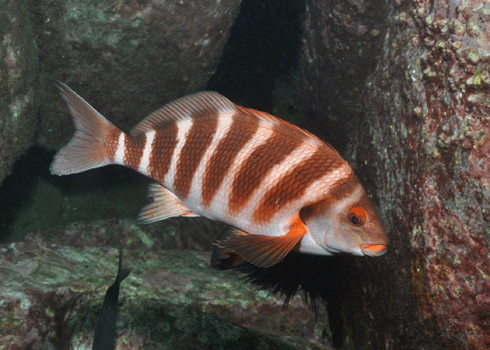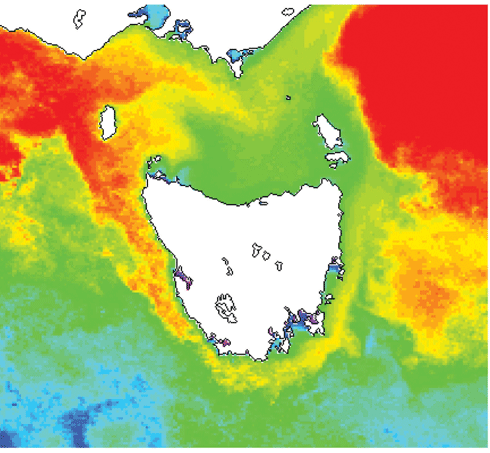
|
Published: 4 July 2011
Climate change bulletin: South-trending warm current changes life in Tassie waters
Southern hemisphere ocean warming is already having a detrimental impact on the banded morwong (Cheilodactylus spectabilis), a long-lived south-east Australian and New Zealand fish species, according to a study recently published in Nature Climate Change.
CSIRO scientific monitoring at Maria Island, off the east coast of Tasmania, revealed an increase in surface water temperatures of nearly 2°C in the Tasman Sea over the past 60 years. This warming is one of the most rapid in southern hemisphere oceans, and is due to globally increasing sea-surface temperatures and local effects caused by the southward extension of the East Australian Current (EAC).
CSIRO marine ecologist Dr Ron Thresher, who co-authored the study with colleagues from the University of Tasmania’s Institute for Marine and Antarctic Studies, says climate change can affect species directly, by influencing their growth, behaviour and how their bodies function, and indirectly, through environmental effects on ecosystems.
‘Generally, cold-blooded animals respond to warming conditions by increasing growth rates,’ he says. ‘In this case, off northern New Zealand, ocean warming has pushed the banded morwong – which inhabits temperate reefs in waters 10–50 metres deep – past the point where increasing temperatures are beneficial to growth.’
The researchers measured fish growth rates by looking at changes in bony structures called otoliths, which fish use for orientation and detection of movement. Similar to annual growth rings of trees, otoliths’ rings can be counted to indicate a fish’s age and annual growth rate, estimated by measuring distances between each new ring.
A co-author of the paper, University of Tasmania researcher Dr Jeremy Lyle, says banded morwong were studied because they can live for almost 100 years. As adults, they also stay in essentially the same area, even if the water temperature shifts.
According to Dr Lyle, growth performance in banded morwong began to suffer above average annual water temperatures of about 17°C.
‘Preliminary field and laboratory studies suggested that this decline in growth may be related to temperature-induced physiological stress, resulting in increased oxygen consumption and reduced ability to sustain swimming activity,’ he explains.

|
|
Reduced growth rates in the long-lived banded morwong correlate with ocean warming off eastern Tasmania due to the southward drift of the East Australian Current. Credit: Rick Stuart-Smith, UTAS
|
Another paper recently published in the Journal of Experimental Marine Biology and Ecology shows that ocean warming off the east coast of Tasmania is 3–4 times the global average, due to intensification of the EAC.
Lead author, Professor Craig Johnson from the Institute for Marine and Antarctic Studies at the University of Tasmania, says increases in the strength, duration and frequency of the EAC have dramatic effects on the region’s ecology.
This large-scale shift is reflected by changes in the structure of zooplankton communities close to the shore, a dramatic regional decline in the extent of dense beds of giant kelp over several decades, marked changes in the distribution of nearshore fishes, and range expansions of other northern warmer-water species, which are colonising Tasmanian coastal waters.
Prof. Johnson said population changes in commercially important invertebrate species such as abalone and rock lobster may also be associated with the warming trend.
The paper also records the establishment of the long-spined sea urchin in Bass Strait and Tasmania.
‘Over-grazing of seaweed beds by this animal is causing a fundamental shift in the structure and dynamics of Tasmanian rocky reef systems by the formation of sea urchin “barrens”,’ says Prof. Johnson.
‘Changes in ocean climate have precipitated a domino effect of cascading ecological change in rocky reef and water column systems.’




